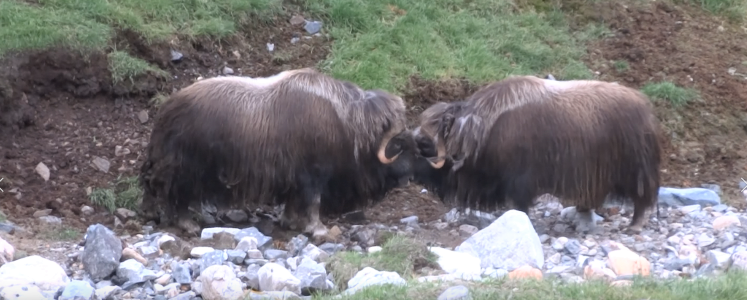
The muskox is a strange animal; one of the largest extant Cabrinaes belonging to the Bovidae family of hoofed, ruminating mammals. Its wool and snout resemble that of a sheep’s, its horns that of a cow’s, and yet its closest relative is the goral, an Asian goat.
During the Pleistocene, muskoxen were plentiful across the entire northern hemisphere, but owing to a warming of the climate towards the end of the epoch, they suffered drastic declines. Today the muskox is endemic only to North Canada and Northeast Greenland. From here, small groups of calves have been translocated to other parts of the Arctic - not least to West Greenland, where the muskox populations have exploded to several thousands, and grown to become a new, vital resource.
Between the first humans arriving to Greenland around 2400 BC and today, muskox-human dynamics, or “pathways”, where one species sustains, transgresses upon, or moves the other have shifted several times over. However, never as intensively as today.
Our use of the term “pathways” is a nod to Steensby’s 1910 theory of the “Muskox Way”, which places the muskox at the centre of prehistoric human migrations across the North American Arctic into Greenland, and to the biosciences, which see pathways as a series of actions or reactions that cause an entity to change or to move. We bring to these uses, an anthropological dimension and explore the pathways along which muskoxen move and change physically and conceptually as: Sustenance (Work Package 1), Economy (Work Package 2), and Movement (Work Package 3).
Using a single species – the muskox – to retell an Arctic natural-and-cultural history including the deep entanglements between natural ecosystems and social forms, Muskox Pathways marks a shift in the scientific approach to Arctic resources and sustainability. Some of our overall aims are to: